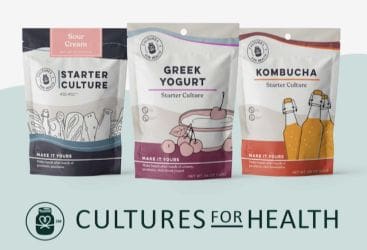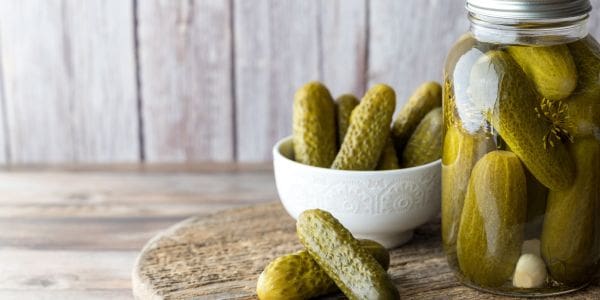Best Cow Feed for Jersey Milk Cows
Jersey milk cows produce some of the tastiest and most nutritious raw milk available to homesteaders. If you’ve been reading our blog for a while now, you’ve probably noticed I mention this tidbit a lot. It’s an important detail to bring up because it’s one of the many reasons jersey milk cows are a solid investment.
If you want to keep your jersey milk cows producing high-quality raw milk, you must provide the best cow feed money can buy for them. Jersey cattle respond well to a dry cow feeding regimen because it reduces the risk of metabolic disorders. I’ll talk more about that later.
If you’re just getting started raising jersey milk cows or are a seasoned pro looking for ways to boost your girls’ raw milk output, this article provides everything you need to get started.
What is a dry cow feeding regimen?
If you noticed me mention the importance of a dry cow feeding regimen and wonder what the heck that is, let me explain. Dry cow feeding refers to the kind of fodder your jersey milk cows are eating. It’s not as complicated as it sounds when you think about one of the main words: dry. It perfectly describes the types of food included in this eating plan.
- Alfalfa hay
- Corn silage
- Corn stover
- Grass hay
- Soybean straw
These are just a few of the dry food sources you can include in your dry cow feeding regimen for your jersey milk cow. With cattle feed prices rising, choosing the best method for feeding your jersey milk cows can help you get the most bang for your buck in raw milk output.
Jersey milk cows eat less
Investing in quality fodder for your jersey milk cows isn’t as expensive as you might imagine. At least not compared with what you’d spend for another breed of dairy cow like Holsteins and Guernsey.
Feed costs represent about 55 percent of the input in raising dairy cattle on a small- to medium-sized homestead. Jersey cattle eat 13 to 18 percent less food than other breeds without affecting milk production, producing significant savings.
The savings don’t stop with the food supply. Since jersey milk cows eat less, they also don’t require as much cropland to satisfy their hunger. You also can reduce the space you need on your homestead for harvesting and storing feed. It’s a win-win situation.
Optimal feeding levels for jersey milk cows
Knowing a jersey milk cow eats less than other dairy cattle breeds doesn’t really tell you how much to feed them. Let’s break it down so you have the complete picture. When it comes to feeding jersey cattle, less is more (at least if we’re talking solids).
The average jersey milk cow eats up to 4.5 percent of her body weight in dry fodder each day. For a typically sized 1,000-pound jersey sow, that equals roughly 45 pounds of dry feed.
There are some things to keep in mind when planning your jersey milk cow’s daily feeding regimen:
- Crude fat levels for jersey cattle are lower than for other dairy breeds. While they need less of it, you must make sure the whole of their diet remains balanced, including the percentage of crude fat they consume.
- Copper levels must remain below 20ppm for jersey milk cows.
- Energy levels are not a critical concern, but still must be balanced against other feeding requirements.
Never overfeed any one feed source to your jersey milk cows. Providing a balance of fodder sources is the best approach for keeping your jersey cattle healthy and producing ample milk supplies.
Don’t forget fresh water
Jersey milk cows need plenty of water to process all that dry fodder. Without access to a freshwater supply, your jersey milk cows will not produce milk. Check with your local hardware store for water troughs sized appropriately for your jersey cattle.
Never use water from sources exposed to a water-softening system. The salt from these systems can negatively impact your jersey milk cow’s production levels.
Jersey milk cows drink between 30 and 50 gallons of freshwater each day, depending on their size. If you live in an area with warmer temperatures, your jersey cattle may consume twice that amount.

Choosing a cow feeder system
Choosing the right cow feeder improves your jersey milk cow’s experience. It also cuts down on food waste to save you money (which is important with cattle feed prices so high right now). Here are some tips for choosing the right cow feeder for your jersey milk cow.
Reduce food waste
An angled feed front on a cow feeder can help reduce food waste. How does this system work to keep your jersey milk cow from wasting her food? The angled front makes it impossible for your cow to pull her head away from the cow feeder without first turning it sideways.
When she turns her head sideways, it’s impossible for her to pull feed into the pen through the opening. It is super easy to adjust the neck openings for this type of cow feeder system, so you don’t have to worry about your cow getting her head stuck.
Self-locking feed fronts
Self-locking feed fronts are recommended for homesteads or small dairy farms with more than one jersey milk cow. They allow you to feed your cows simultaneously without wasting food. These cow feeder systems come with panic-release features.
Accommodate for foraging
If your jersey milk cow has access to land for foraging, you must adjust your cow feeder to accommodate for the food she is eating on her own. You don’t want your jersey cattle to become overweight because it can negatively impact their health.



Choosing the best cow feed for jersey milk cows
Choosing the best cow feed for your jersey milk cows can be confusing if you’re new to homesteading. Find a good mentor who can guide you through the process. You also can ask us questions and we’ll do our best to answer them. Be sure to check out our other blogs and subscribe to our newsletter to get tips and tricks for raising jersey milk cows delivered directly to your inbox.
Happy homesteading!
Sources:
- A Genetic Investigation of Island Jersey Cattle…, U.S. National Library of Medicine, National Institutes of Health. Accessed February 23, 2022.
- Feeding Jersey Calves from Birth to Transition, Gary Moore, Calf Specialist, Cargill Animal Nutrition. Accessed February 23, 2022.
- Water Needs and Quality Guidelines for Dairy Cattle, North Dakota State University Agriculture Department. Access February 23, 2022.
Jersey milk cows produce some of the tastiest and most nutritious raw milk available to homesteaders. If you’ve been reading our blog for a while now, you’ve probably noticed I mention this tidbit a lot. It’s an important detail to bring up because it’s one of the many reasons jersey milk cows are a solid investment.
If you want to keep your jersey milk cows producing high-quality raw milk, you must provide the best cow feed money can buy for them. Jersey cattle respond well to a dry cow feeding regimen because it reduces the risk of metabolic disorders. I’ll talk more about that later.
If you’re just getting started raising jersey milk cows or are a seasoned pro looking for ways to boost your girls’ raw milk output, this article provides everything you need to get started.
What is a dry cow feeding regimen?
If you noticed me mention the importance of a dry cow feeding regimen and wonder what the heck that is, let me explain. Dry cow feeding refers to the kind of fodder your jersey milk cows are eating. It’s not as complicated as it sounds when you think about one of the main words: dry. It perfectly describes the types of food included in this eating plan.
- Alfalfa hay
- Corn silage
- Corn stover
- Grass hay
- Soybean straw
These are just a few of the dry food sources you can include in your dry cow feeding regimen for your jersey milk cow. With cattle feed prices rising, choosing the best method for feeding your jersey milk cows can help you get the most bang for your buck in raw milk output.
Jersey milk cows eat less
Investing in quality fodder for your jersey milk cows isn’t as expensive as you might imagine. At least not compared with what you’d spend for another breed of dairy cow like Holsteins and Guernsey.
Feed costs represent about 55 percent of the input in raising dairy cattle on a small- to medium-sized homestead. Jersey cattle eat 13 to 18 percent less food than other breeds without affecting milk production, producing significant savings.
The savings don’t stop with the food supply. Since jersey milk cows eat less, they also don’t require as much cropland to satisfy their hunger. You also can reduce the space you need on your homestead for harvesting and storing feed. It’s a win-win situation.
Optimal feeding levels for jersey milk cows
Knowing a jersey milk cow eats less than other dairy cattle breeds doesn’t really tell you how much to feed them. Let’s break it down so you have the complete picture. When it comes to feeding jersey cattle, less is more (at least if we’re talking solids).
The average jersey milk cow eats up to 4.5 percent of her body weight in dry fodder each day. For a typically sized 1,000-pound jersey sow, that equals roughly 45 pounds of dry feed.
There are some things to keep in mind when planning your jersey milk cow’s daily feeding regimen:
- Crude fat levels for jersey cattle are lower than for other dairy breeds. While they need less of it, you must make sure the whole of their diet remains balanced, including the percentage of crude fat they consume.
- Copper levels must remain below 20ppm for jersey milk cows.
- Energy levels are not a critical concern, but still must be balanced against other feeding requirements.
Never overfeed any one feed source to your jersey milk cows. Providing a balance of fodder sources is the best approach for keeping your jersey cattle healthy and producing ample milk supplies.
Don’t forget fresh water
Jersey milk cows need plenty of water to process all that dry fodder. Without access to a freshwater supply, your jersey milk cows will not produce milk. Check with your local hardware store for water troughs sized appropriately for your jersey cattle.
Never use water from sources exposed to a water-softening system. The salt from these systems can negatively impact your jersey milk cow’s production levels.
Jersey milk cows drink between 30 and 50 gallons of freshwater each day, depending on their size. If you live in an area with warmer temperatures, your jersey cattle may consume twice that amount.



Choosing a cow feeder system
Choosing the right cow feeder improves your jersey milk cow’s experience. It also cuts down on food waste to save you money (which is important with cattle feed prices so high right now). Here are some tips for choosing the right cow feeder for your jersey milk cow.
Reduce food waste
An angled feed front on a cow feeder can help reduce food waste. How does this system work to keep your jersey milk cow from wasting her food? The angled front makes it impossible for your cow to pull her head away from the cow feeder without first turning it sideways.
When she turns her head sideways, it’s impossible for her to pull feed into the pen through the opening. It is super easy to adjust the neck openings for this type of cow feeder system, so you don’t have to worry about your cow getting her head stuck.
Self-locking feed fronts
Self-locking feed fronts are recommended for homesteads or small dairy farms with more than one jersey milk cow. They allow you to feed your cows simultaneously without wasting food. These cow feeder systems come with panic-release features.
Accommodate for foraging
If your jersey milk cow has access to land for foraging, you must adjust your cow feeder to accommodate for the food she is eating on her own. You don’t want your jersey cattle to become overweight because it can negatively impact their health.



Choosing the best cow feed for jersey milk cows
Choosing the best cow feed for your jersey milk cows can be confusing if you’re new to homesteading. Find a good mentor who can guide you through the process. You also can ask us questions and we’ll do our best to answer them. Be sure to check out our other blogs and subscribe to our newsletter to get tips and tricks for raising jersey milk cows delivered directly to your inbox.
Happy homesteading!
Sources:
- A Genetic Investigation of Island Jersey Cattle…, U.S. National Library of Medicine, National Institutes of Health. Accessed February 23, 2022.
- Feeding Jersey Calves from Birth to Transition, Gary Moore, Calf Specialist, Cargill Animal Nutrition. Accessed February 23, 2022.
- Water Needs and Quality Guidelines for Dairy Cattle, North Dakota State University Agriculture Department. Access February 23, 2022.
In our kitchen, we only use cultures from Cultures for Health.
Get yours here and start culturing today.
Popular Articles
Newsletter
Get signed up to get latest updates and new information from the Jersey Milk Cow!
This site uses Akismet to reduce spam. Learn how your comment data is processed.












Leave a Reply